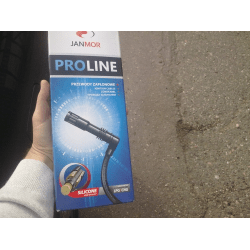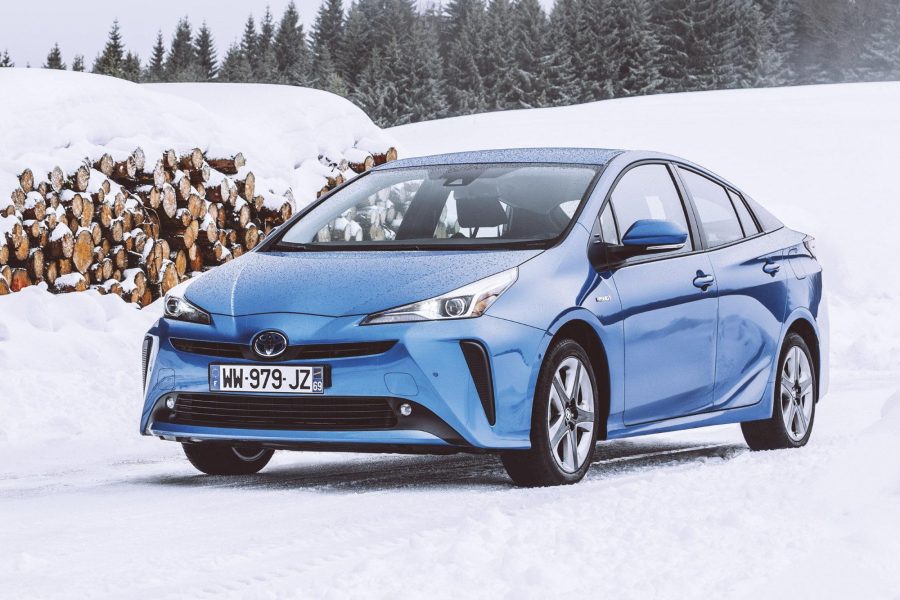
Review of Haval H9 2018
Content
- Does it represent good value for money? What functions does it have? 9/10
- Is there anything interesting about its design? 7/10
- How practical is the interior space? 8/10
- What are the main characteristics of the engine and transmission? 6/10
- How much fuel does it consume? 6/10
- What is it like to drive? 7/10
- What safety equipment is installed? What is the safety rating? 7/10
- How much does it cost to own? What kind of guarantee is provided? 7/10
- Verdict
- Would you consider Haval or still have doubts about the Chinese? Tell us in the comments below.
Almost from the moment automakers began to appear in China, we have been talking about the imminent boom in sales of Chinese new cars in Australia.
They're coming, we said. And no, they are not very good right now, but they will keep getting better and better and better until one day they are competing with the best from Japan and Korea for their money.
That was years ago and the truth is they never got good enough to seriously shake cages here in Oz. Sure, they were an inch closer, but there was still a gulf of daylight between them and the competition.
But we just spent a week piloting the updated Haval H9 large SUV and can report that the gap has not only narrowed, it has almost disappeared, and daylight has become a streak in many important areas.
So this is the beginning of the Chinese revolution?
| Haval H9 2018: Premium (4 × 4) | |
|---|---|
| Safety Rating | |
| engine's type | 2.0 L turbo |
| fuel type | Premium unleaded gasoline |
| Fuel efficiency | 12.1l / 100km |
| Landing | 7 Places |
| Price from | $28,200 |
Does it represent good value for money? What functions does it have? 9/10
Let's be honest, Haval hasn't been around in Australia long enough to sell anything even resembling badge loyalty. So if there's any hope of increasing her sales by 50+ a month (March 2018), she knows she has to sweeten the pot with price.
And it couldn't be much nicer than a $44,990 sticker stuck to the H9 Ultra. It's about $10k cheaper than the cheapest Prado (and a staggering $40k cheaper than the most expensive version), and the Ultra absolutely floats with the kit for the money.
Alloy wheels are 18 inches in diameter.
Outside, 18-inch alloy wheels, LED daytime running lights, front and rear fog lamps, dusk-sensing follow-me-home headlights, and standard roof rails.
Inside, there are heated faux leather seats in the first two rows (and ventilation in the front), and there's even a massage function for the driver and passenger. Power windows, as well as a third-row folding function, as well as a sunroof, leather-wrapped steering wheel and aluminum pedals.
The eco-leather on the seats and the soft-touch dashboard are pleasant to the touch, as is the steering wheel.
In terms of technology, an 8.0-inch touchscreen (but no Apple CarPlay or Android Auto) is paired with a 10-speaker stereo, and there's standard navigation, keyless entry and push-button start.
Finally, there's a bunch of safety kit and off-road kit, but we'll come back to that in our other subheadings.
Is there anything interesting about its design? 7/10
This is a big and flat-sided beast, H9, and it is unlikely that he will win too many beauty pageants. But on the other hand, few people in this category do or try to do it, and it looks tough and purposeful, which is probably more important.
From the front, it looks really massive, with its giant silver grille, huge headlights, and giant fog lights perched like alien eyes in the farthest corners of the front.
Inside, the fit and finish is pretty good, with a giant faux wood center console.
On the side, silver overlays (a bit too shiny for our liking) break up the otherwise rather soft profile, and the rubber-studded side steps feel nice to the touch. Out back, the large and virtually unremarkable rear end is home to a massive side-hinged trunk opening, with a pull handle mounted on the far left.
However, it's not perfect in places: some panels don't quite line up, and there's more gaps between others than you'd like, but you have to look closely to notice.
Inside, the fit and finish is pretty good, with a giant faux wood center console that houses a one-touch shifter, an electric handbrake (a luxury still missing on some Japanese models) and most of the XNUMXWD features. . The "eco" leather on the seats and the soft-touch dashboard feel nice to the touch, as does the steering wheel, and the second and third rows are also nicely furnished.
From the front it looks massive.
How practical is the interior space? 8/10
Very practical, thanks for asking. This is a behemoth (4856 m long, 1926 mm wide and 1900 mm high), so there will be no problems with space in the cabin.
Up front, there's a necessary cupholder bracket, mounted on a center console that's wide enough to play football on, and the seats are big and comfortable (and they'll give you a massage). There is room for bottles in the front doors, and the infotainment system, while a little slow and clunky, is easy to understand and operate.
Climb up to the second row and there's plenty of room (both legroom and headroom) for passengers and you can no doubt fit three kids in the back. At the rear of each of the front seats, there is a storage net, a place for bottles in the doors and two more cup holders in the fold down bulkhead.
There's no shortage of finesse for rear-seat passengers, too, with air vents, temperature controls and heated rear seats. And there are two ISOFIX points, one on each window seat.
Climb up to the second row and there's plenty of room (both legroom and headroom) for passengers.
Things aren't as luxurious for third-row passengers, with thin and hard seats set cramped. But there are third-row vents and a cup holder for sixth and seventh seats.
The side-hinged trunk opens to reveal a ridiculously small storage space with the third row in place, but things improve dramatically when you fold down (electronically, no less) the rear seats with a giant storage space that will make your phone ring every day. time when one of your friends moves.
Things aren't as luxurious for third-row passengers.
What are the main characteristics of the engine and transmission? 6/10
It's like a diesel in disguise, this 2.0-litre turbocharged petrol engine delivering 180kW at 5500rpm and 350Nm at 1800rpm. It is paired with an eight-speed automatic transmission and drives all four wheels. That means a 100-10 mph time of “just over XNUMX seconds” – about two seconds faster than the car it replaces.
The Haval ATV Control System is also standard, meaning you can choose between six drive settings including "Sport", "Mud" or "4WD Low".
It's like a diesel in disguise, this 2.0-litre turbocharged petrol engine.
How much fuel does it consume? 6/10
Haval reckons you'll get 10.9 liters per 100 kilometers on the combined cycle, with claimed emissions of 254 g/km. The H9's 80-litre tank is only rated for premium 95 octane fuel, which is a shame.
What is it like to drive? 7/10
We've ridden the Haval for many miles (maybe subconsciously waiting for it to drop) and through all sorts of road conditions, and it never missed a beat.
The obvious difference is the ride, which is now very good and gets rid of CBD bumps and bumps without fuss. At no stage does it feel dynamic or overly road-bound, but it does create a comfortable turn-off that makes you feel like you're floating above the ground. Of course, this is not very good for a powerful car, but it suits the character of a large Haval very well.
However, the steering has a vulgar vagueness, and it doesn't inspire confidence on something twisty, with plenty of fixes for when you take on something tricky.
Visibility is very good from all windows, including the rear window.
The power delivery is surprisingly powerful and smooth when you put your foot down. But there are downsides to a small turbocharged engine pushing the size of an apartment building around it. First, the engine has this staggering delay when you first put your foot down - it's like you're playing chess with the engine and it figures out its next move - before finally bursting into life. Sometimes overtaking turns into a dizzying task.
The petrol engine (which masquerades as a diesel admirably) can feel a bit rough and rugged when you really put your foot down and you'll find all the usable power lurking in the lower end of the rev range. . But damn convenient. Visibility is very good from all windows, including the rear window. And the gearbox is amazing, swapping gears smoothly and seamlessly.
But… there were electric gremlins. First off, contactless unlocking is the weirdest we've come across - sometimes it works, sometimes it's harder, and you need a tutorial to figure out how it talks to the trunk. The alarm went off twice, despite the fact that I also opened the doors. It could be some user error that I don't understand, but worth mentioning anyway.
Warranty and safety rating
Basic Warranty
5 years / 100,000 km
guarantee
ANCAP Safety Rating
What safety equipment is installed? What is the safety rating? 7/10
The safety story begins with dual front and side airbags, as well as curtain airbags that stretch across all three rows. You'll also find a vision camera as well as front and rear parking sensors.
Thankfully, Haval also uses the latest technology, so you'll get lane departure warning, rear cross traffic alert, and blind spot monitoring. Off-road, hill descent control is standard, and Haval claims a safe wading depth of 700mm.
The H9 received a four-star ANCAP accident rating when the previous model was tested in 2015.
How much does it cost to own? What kind of guarantee is provided? 7/10
Expect a five-year/100,000 km warranty with service intervals tied to six months and 10,000 km. Service charges are available at Haval dealerships, so be sure to check them out before you sign the dotted line.
Verdict
The Haval H9 Ultra is proof that Chinese cars have finally lived up to the hype. The value on offer is incredible, and a five-year warranty helps assuage any concerns about ownership. Does it stand up to competitors? Not really. Not yet. But you can be sure that other cars in this segment will feel the hot breath of the H9 on the back of their heads.
Would you consider Haval or still have doubts about the Chinese? Tell us in the comments below.

